For today’s post I choose one of the picture stories that are part of my e-book “Plant photography; from theory to practice” (have a look at my website www.noltee.com).
The species of Brunsvigia that is pictured here (B. bosmaniae), is widespread in western South Africa. The common name is maartlelie (March lily), although it may also flower in April and May. When we had our farm in the southwest corner of the Great Karoo, we regularly encountered plants and dry inflorescences of these bulbous plants in the veld. Because we did not got there often during the hot summer months, it took us three years however before we saw the plants in flower. And what a delightful sight it was! Smaller and bigger groups of plants -sometimes dozens of them- colouring the otherwise dry landscape with big bright patches of pink. When I had a closer look at the flowers I decided to try and record some of the thoughts that flashed through my mind while photographing these wonderful subjects. What follows is the result of that process.
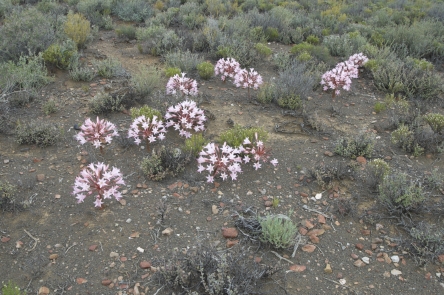
1 This is how I first saw the plants as part of the landscape, growing in their natural surroundings. If that is what you want to record, the picture does what it should do, especially when it is part of a series. Visually, however, something is lacking.

2 By going a bit closer and photographing 3 inflorescences from above, I got a completely different picture. The composition is now much less spontaneous and perhaps even a bit formal.
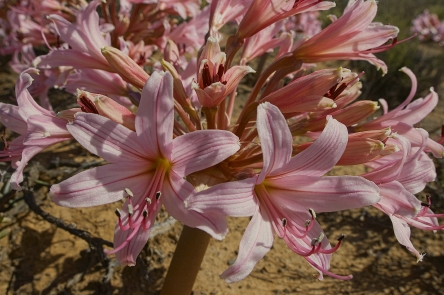
3 When you look at only one inflorescence, it becomes clearer what the individual flowers look like and how they are arranged. Although there are many flowers vying for attention, the picture is held together by the flower stalks all leading to a central point.
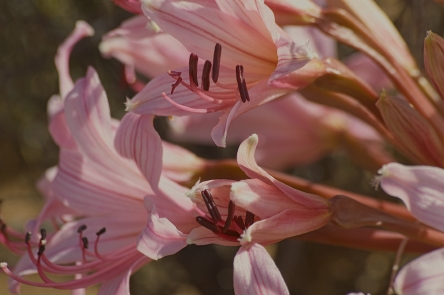
4 Although getting closer often makes for a stronger image, in this case it works counterproductive. As there is no dominant point of interest, the photo looks jumbled.
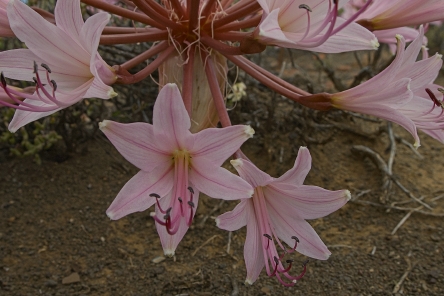
5 Slightly raising the camera and then tilting it down, resulted in a much improved picture, with clear lines all leading to the centre of the inflorescence.

6 Compared to what happened in 4, getting closer really helps here, because the flowers are more or less in the same plane and all the rest is out of focus.

7 It would be interesting to get a good picture of the stamens with their dark colour. Although I used an aperture of only f/6, the petals are enough in focus to draw the attention away from the stamens. Because of that, it is unclear what the message of the picture is.

8 Now the concept is somewhat better, but the execution is still bad. As only one stamen is in focus, the picture is completely out of balance.
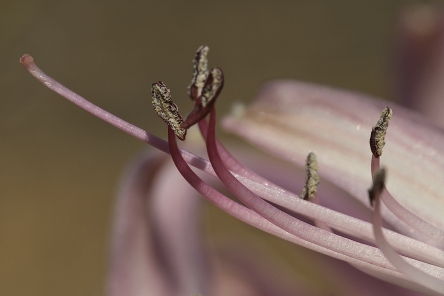
9 Here most of the stamens are well defined, in focus and standing out against an unobtrusive background.
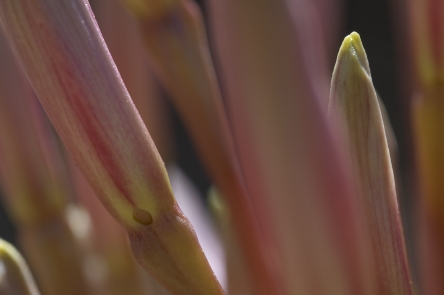
10 Because of their prettiness, flowers have a habit of drawing all attention to them, so that other parts of the plant tend to be ignored. Often it pays to resist that call and see what else of interest is there. Here we are looking at the buds and although the photo is not great, it gives the feeling that something beautiful is hiding in there.
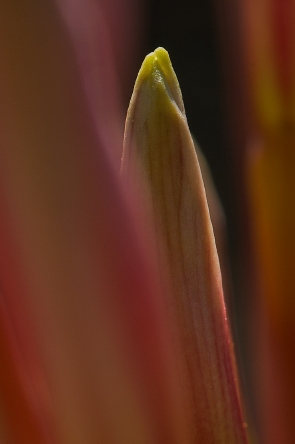
11 After cropping and a bit of playing around with light and colour, this is the result I got. Botanically it is of little use, because it is quite hard to identify if you have not seen the preceding pictures.
Visually however, this is what I would call “an image with attitude”.
* * * * *
The March Lily is an amazing plant. I really enjoyed the information and photographs are amazing. Thank you for sharing.
Thank you for your kind words, Charlie!